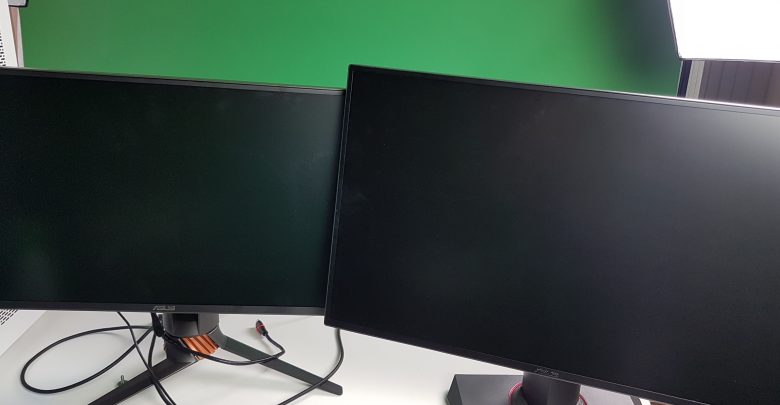High Frequency Screens and Flickering
For the past 3 years, I have been buying myself some very nice gaming screens. They all had one thing in common: they all boasted high frequency rate.
Either 100 Hertz, 144 Hertz, or my latest acquisition, a whooping 240 Hertz gaming monitor.
Hertz
What is the fuss all about? Why should you care about having a higher frequency monitor?
Let me be clear. There is only ONE reason you should: GAMING!
A high frequency monitor means more image rendered on your screen per second. Example in hand, if you have a 60 Hertz screen, your screen will refresh its rendered image 60 times per second. If you have a 100 Hertz refresh rate, then your screen will run at 100 Frames Per Second (FPS).
The more FPS (or refresh rate) you have, the smoother and more realistic a movement looks like. Simple enough.
The only problem is that an abnormal amount of people report having issues with high refreshing rate monitors. No matter the monitor or video card monitor brand, thousands upon thousands of otherwise happy gamer are reporting the very same issue: Flickering (or black screens).
Flickering
The epileptic nightmare. Imagine going on with your daily business, or playing your favorite video game, and suddenly, your screen goes black.. then comes back.. and then black again, doing so at irregular interval and without obvious reasons.
Your first reflect is to check that your display cable is securely in pace both on your monitor and your video screen, you may even reinstall your video card drivers, or try to OC your GPU. Every one seems to have the same approach.
One thing is certain, all the above will fail or fix the issue only momentary.
As in many redundant issues, the problem is somewhere else, and much easier to fix.
The HARDWARE
Before going on to forums and start endless threads, which of some are a decade old with posting of a this very week, make sure to have what it takes to run a high frequency game and high frequency monitor.
Here is the funny thing. To take full advantage of a high refreshing rate, you need a game to output the same or greater Frames Per Second. For example, if you have your screen refresh rate set at 100 Hertz, and your game output only up to 60 FPS, then… obviously, you will only see experience a 60 FPS game. You will need enough memory, CPU process, GPU horse power to match or over perform the monitor refreshing rate.
NVIDIA did try (somewhat successfully) to address this with its G-SYNC chip-set which it installs in both its newer GPUs and high performing monitors. This allows the GPU and the monitor to sync both the GPU performances and the monitor refreshing rate to have a matching FPS and refreshing rate as much as possible.
The Video Card
It seems almost trivial to say so, but make sure that your video card can handle such refreshing rates (if produced after 2011, they usually do) and that they are DisplayPort 1.2 compliant at the very least.
The Drivers
Of course make sure to have your Video card latest drivers installed. That goes without saying.
The Display Cable
Here is the real target of this article. 99% of the reported flickering is caused by a sub-quality or inadequate display cable.
Modern video cards usually offer you an array of 3 Display Ports and 1 HDMI port.
To run a high refresh rate monitor, ONLY the Display Port can do so! The HDMI (even 2.0) will lock your frequency at 60 Hertz or below. Any attempt to run your config at a higher refresh rate, will result in an out of range message on your screen.
Display Port
Display Ports cable ARE confusing. Unlike USB plug, they do not have any color codes, or marking to identify which generation they belong to. Even their boxing seems to purposely not report what gen they are from.
And it s had its importance,
BANDWIDTH:
Every new iteration of Display Port cables comes with a massive bandwidth improvement and refresh rate abilities.
| Shorthand | Refresh Rate (Hz) | Data RateRequired | DisplayPort Version / Maximum Data Rate | ||||
|---|---|---|---|---|---|---|---|
| 1.0–1.1a | 1.2–1.2a | 1.3 | 1.4 | ||||
| 8.64 Gbit/s | 17.28 Gbit/s | 25.92 Gbit/s | 25.92 Gbit/s | ||||
| 1080p | 30 | 1.58 Gbit/s | Yes | Yes | Yes | Yes | |
| 60 | 3.20 Gbit/s | Yes | Yes | Yes | Yes | ||
| 120 | 6.59 Gbit/s | Yes | Yes | Yes | Yes | ||
| 144 | 8.00 Gbit/s | Yes | Yes | Yes | Yes | ||
| 240 | 14.00 Gbit/s | No | Yes | Yes | Yes | ||
| 1440p | 30 | 2.78 Gbit/s | Yes | Yes | Yes | Yes | |
| 60 | 5.63 Gbit/s | Yes | Yes | Yes | Yes | ||
| 75 | 7.09 Gbit/s | Yes | Yes | Yes | Yes | ||
| 120 | 11.59 Gbit/s | No | Yes | Yes | Yes | ||
| 144 | 14.08 Gbit/s | No | Yes | Yes | Yes | ||
| 165 | 16.30 Gbit/s | No | Yes | Yes | Yes | ||
| 240 | 24.62 Gbit/s | No | No | Yes | Yes | ||
| 4K | 30 | 6.18 Gbit/s | Yes | Yes | Yes | Yes | |
| 60 | 12.54 Gbit/s | No | Yes | Yes | Yes | ||
| 75 | 15.79 Gbit/s | No | Yes | Yes | Yes | ||
| 120 | 25.82 Gbit/s | No | No | Yes | Yes | ||
| 144 | 31.35 Gbit/s | No | No | No | Yes | ||
| 240 | 54.84 Gbit/s | No | No | No | Yes | ||
| 5K | 30 | 10.94 Gbit/s | No | Yes | Yes | Yes | |
| 60 | 22.18 Gbit/s | No | No | Yes | Yes | ||
| 120 | 45.66 Gbit/s | No | No | No | Yes | ||
| 8K | 30 | 24.48 Gbit/s | No | No | Yes | Yes | |
| 60 | 49.65 Gbit/s | No | No | No | Yes | ||
| 1.0–1.1a | 1.2–1.2a | 1.3 | 1.4 | ||||
| DisplayPort Version | |||||||
And here is your flickering issue!
Most of the Display Port cables out there are 1.0 or 1.1. And there is absolutely no way to differentiate them from later generations.
The flickering effect that you so dread is due to the fact that you are using a 1.0 or 1.1 Display Port cable. These cables do not provide enough bandwidth to convey, say, 144 frames per second of 2k resolution. And when you do try, of course, your cable cannot keep up with the massive GPU output and what the monitor needs, to keep a steady flow of video output.
Therefore, the solution is simple! When buying a monitor, ensure that you also order (if not provided) the right Display Port cable.
IIf you are going with a high-en gaming monitor, I would go straight to a 1.4 HBR3 cable. They are more expensive (about 35 USD), but you are set for generations of monitors and video cards to come. This new standard can not only deliver 240 Hertz refresh rates to a 4k panel, but it can cater to 5k and 8k panels as well! In short it is future proof!


